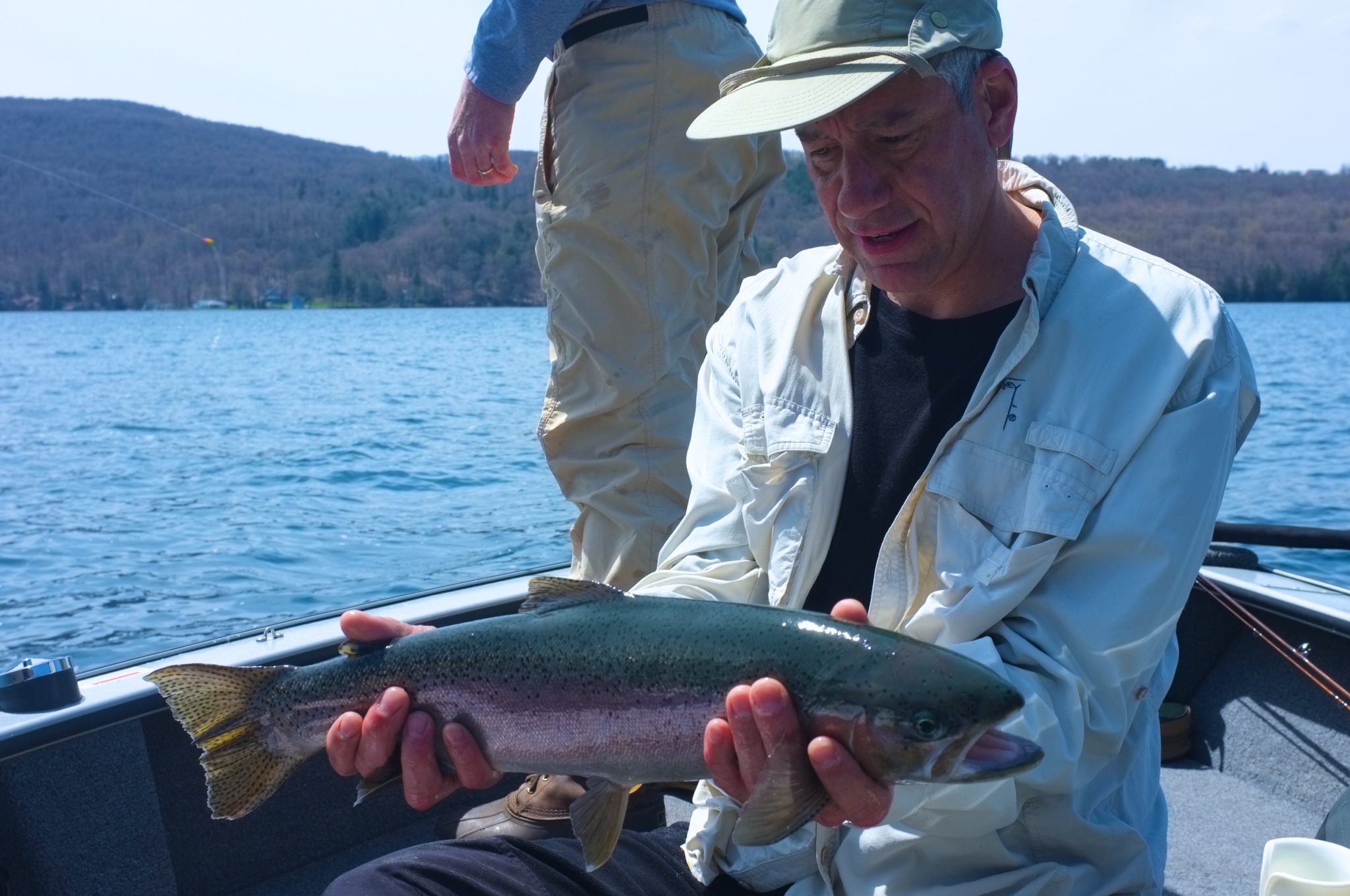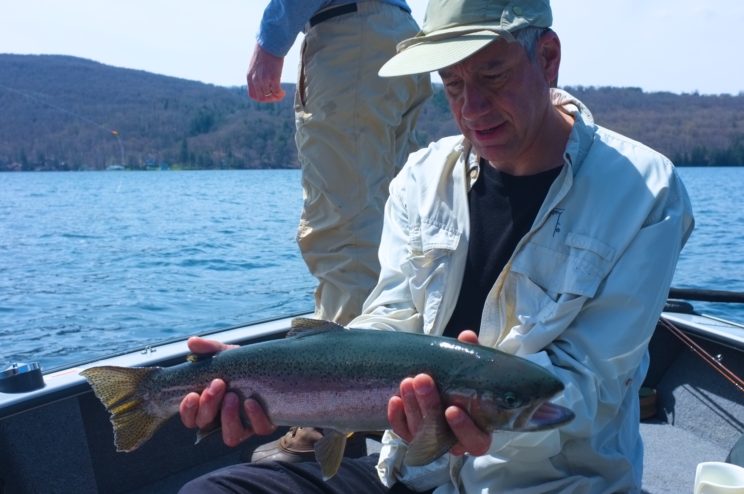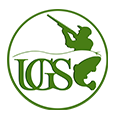

A popular early spring technique for fly casters is throwing streamers. It is suitable for fisheries that harbor good populations of baitfish…Forage-based lakes and rivers. A large eastern Finger Lake that I fish often is unique in that it has escaped (so far) becoming a forage-based lake. No introduced baitfish are present. While sculpin and immature yellow perch are a staple of the lake-dwelling rainbows’ diet in this natural lake, the trout are keyed in on insects, crayfish, and scuds.
But matching the hatch, on big trout lakes, is often unnecessary in early spring when water temperatures hover in the low 40’s or below. In fact, the fly you have tied on is less important than locating the trout, making a stealth approach with the boat, and delivering a good presentation. The leader, however, is the integral part of success.
Float, corky, indicator, bobber…Whatever you want to call it, it is also a key component to this system. Success using my leader recipe can be accomplished without the indicator, but detecting subtle takes becomes far more difficult. Indicators make it easier for people to catch fish. And in my business, that is what its all about.
The float also is an important part of the infrastructure of the leader system. The leader system, or recipe I use is not complicated, but it is proprietary. Meaning it is a combination of different types and diameters of line developed to achieve the desired affect. It is a basic 60/40/20 design of tapered leader.
For the butt section, tie a perfection loop in one end of an eight foot section of 25# monofilament. To this connect six feet of 15# clear monofilament line using a surgeons knot for the middle section. Then four feet of 8# Seaguar fluorocarbon is knotted to this. This completes the 18 foot leader.
Since my Lund boat is 18′ in length, after constructing the leader, I stretch it tight along the port gunnel of my boat using a pair of stainless round top screws (coated with rubber heat shrink to protect line from abrasion) placed strategic in the gunnel at bow and stern. This is important. Doing this I can keep two or three leaders on-hand, pre-stretched and straight as an arrow, ready to go. It makes all the difference.
After I launch and start my drift, the fly rod is strung and a pre-stretched leader is then attached to a weight forward Rio Gold Fly line. Next, a float or indicator is threaded up the leader and pegged at the surgeon knot connecting the monofilament and the fluorocarbon. A five or six foot tippet section of 6# fluorocarbon is attached to the leader using a surgeons knot or uni-knot. To the end of this is attached a weighted fly of appropriate size and color using a loop knot. The final touch is to grease the last ten feet of fly line, butt, and middle section of the tippet to the indicator only. Now it is ready to fish.
Drifting along, rigging the fly rod, my guests are usually quite interested in what I am doing. When I tell them they will be casting a 22 foot leader they look at me with one eye closed. “It’s easy!” I tell them. And it is. Fly casting on the open lake is forgiving. And once the caster develops the adjusted timing of their forward and back cast (while ALWAYS keeping their rod tip high) to allow for the long leader to unfold, it is easy to do… Really no different than any other leader. Just longer.
The fly and fluorocarbon sink. The rest of the leader does not. It lays high on the surface of the lake. Fished in depths from 10 to 20 foot, this leader lets a fly lounge in the strike zone of hungry trout on lakes.
No action is imparted until the angler lifts the rod to make his backcast. Just the waves upon the floating line, and floating section of leader and indicator, create a subtle, natural, drifting of a morsel – (perhaps it is a crayfish, a scud, a snail imitation) – in suspended animation adrift above the weeds and rocks.
The takes are often subtle in early spring. The indicator will just do something odd, or six slightly under the surface. As water temperatures climb, the strikes will become more aggressive, and a series of short strips can be employed to get a nearby trouts attention.
It is deadly.
Peace
Mike

